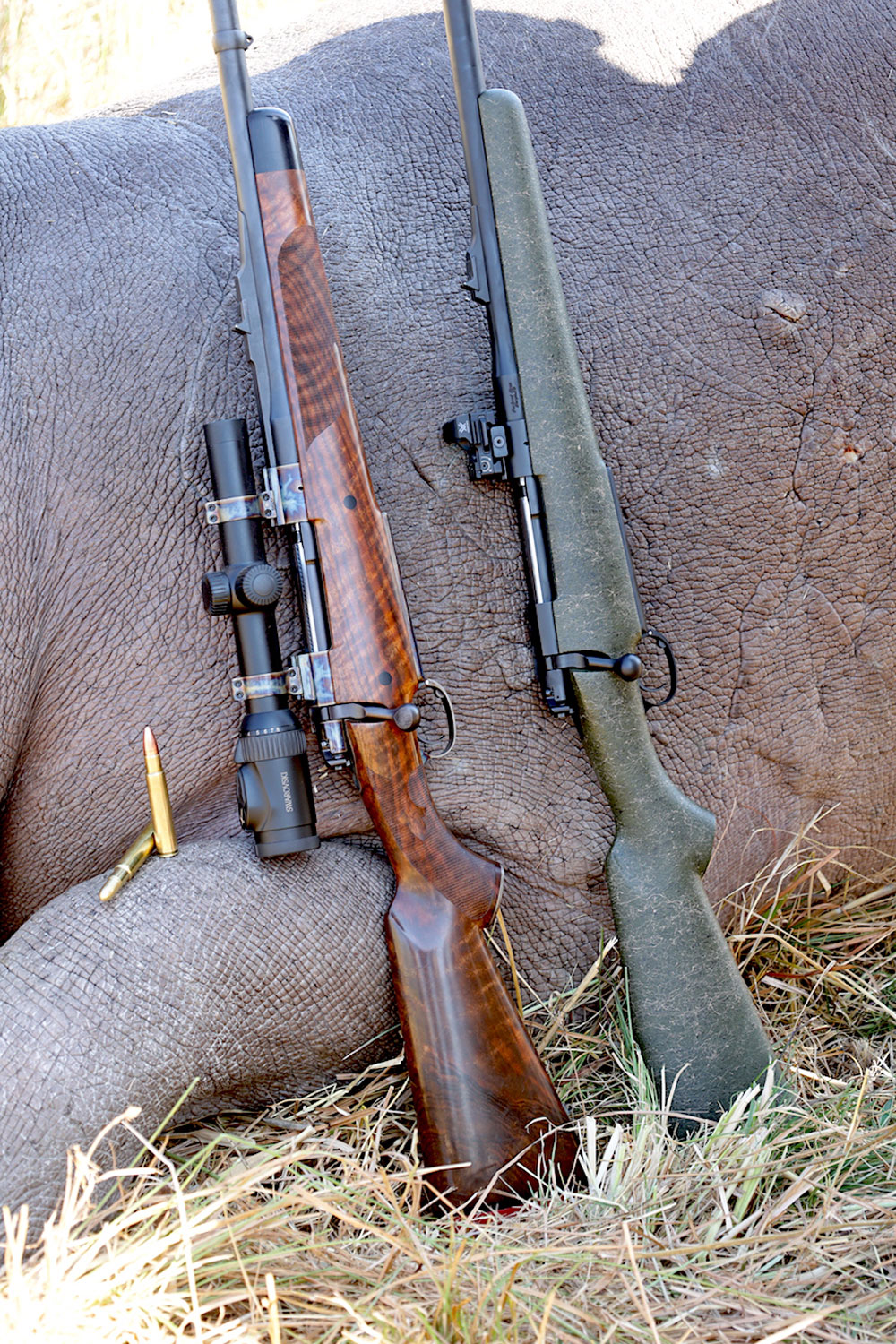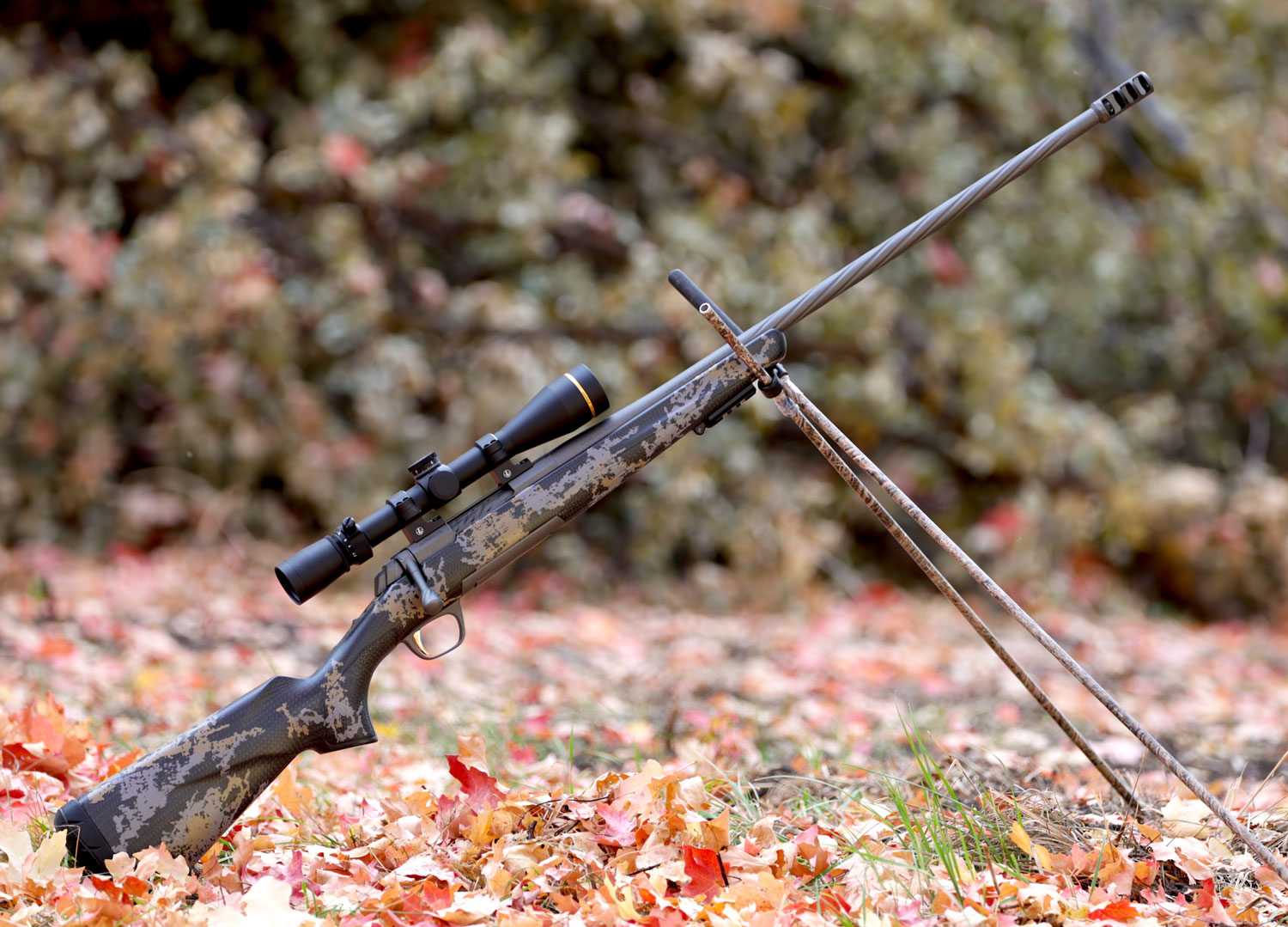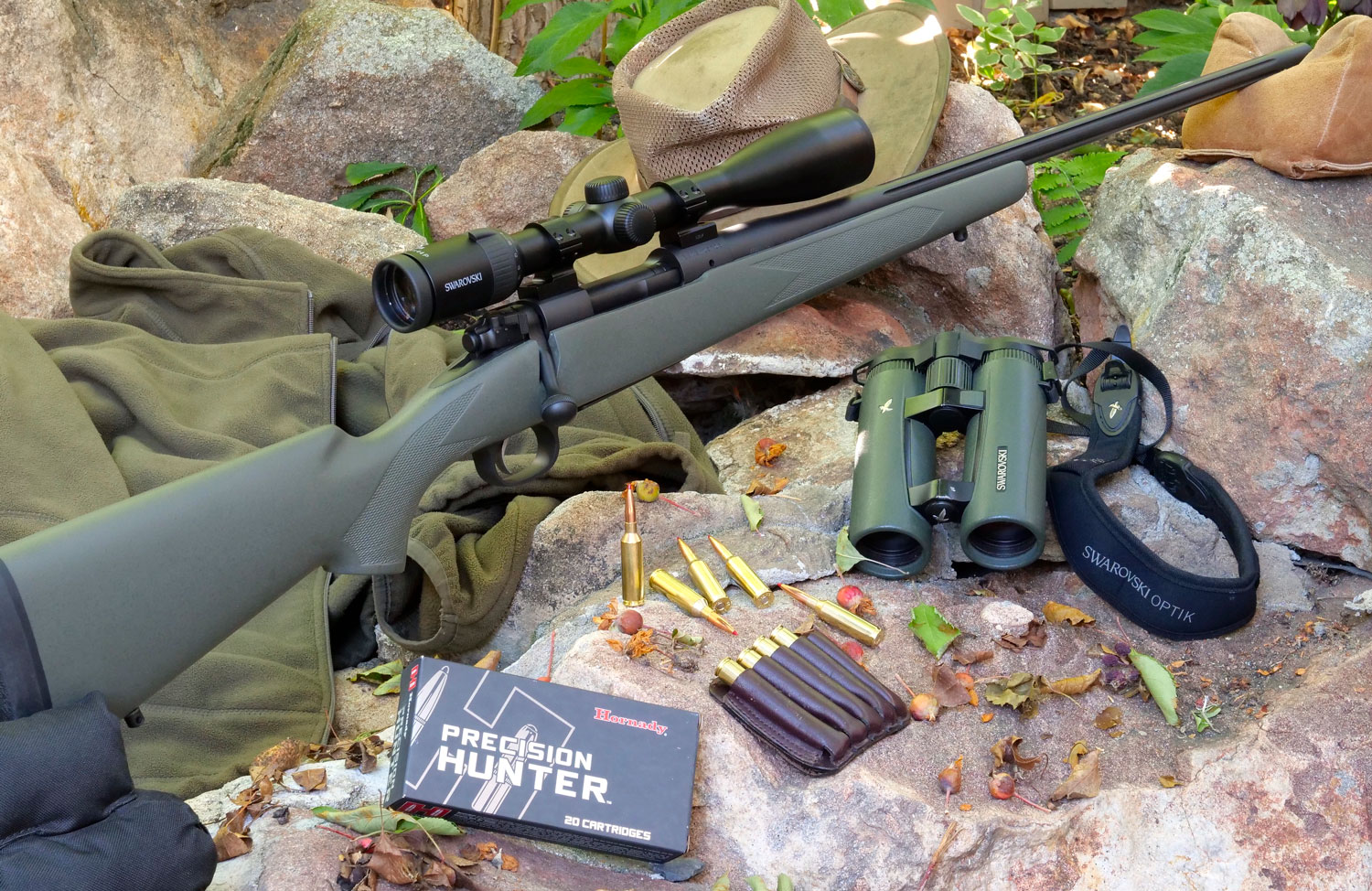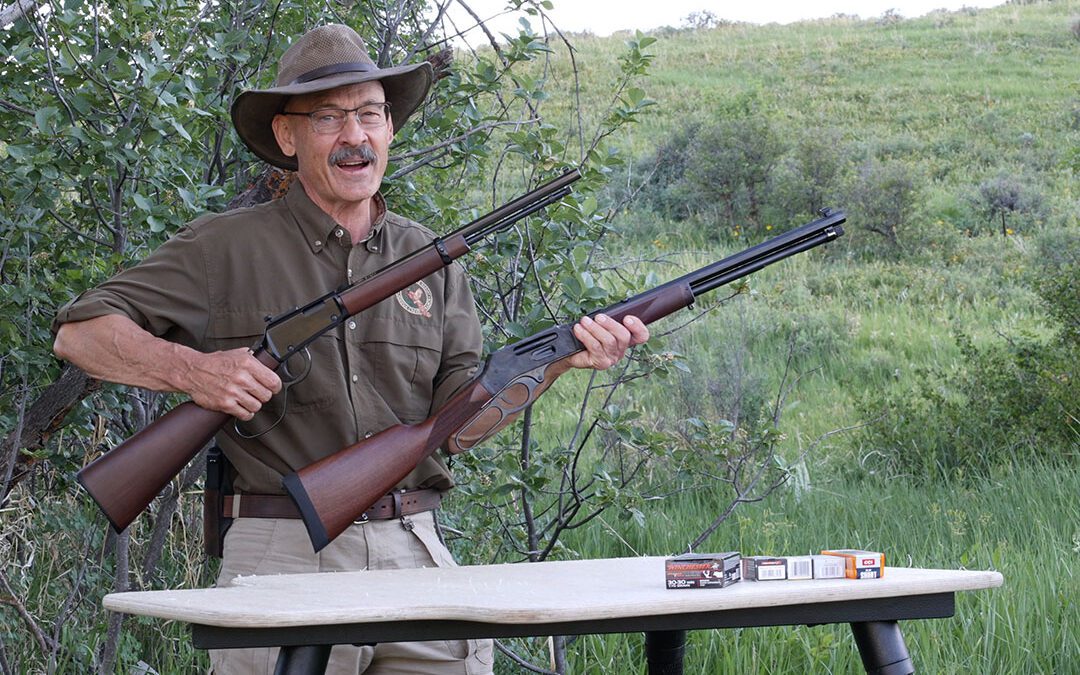We have the rifles. We have the cartridges. We have the bullets.
What we don’t have is consensus.
Which is why we have so many rifles, cartridges and bullets.
Welcome to free choice, an unusual option in most parts of the world. A challenge if not conundrum in the USA. But what a luxurious first-world problem to face. Shall we address our annual whitetail hunt with a classic walnut-and-blued bolt-action 270 Winchester or the old 45-70 lever-action? Or should we go full 21st century with an AR-15 in 6.5 Grendel?
What about that elk hunt out West? Will the old 7mm Remington Magnum suffice, or should we pick up a new bolt-action in 7mm PRC? Maybe even one of those long-range platform rifles with adjustable LOP and comb? Or maybe a stainless-synthetic in 338 Winchester Magnum, the consensus “best” cartridge for elk?

These rifles represent two ends of the bolt-action, dangerous game rifle spectrum. A Sunday Go to Meeting version versus a Monday-go-to-work outfit.
And then there is Africa. Those buffalo and eland will surely require a 375 Ruger, if not H&H. Unless you think one of the 416s is a safer bet.
Europeans address caliber/cartridge choices with switch barrel rifles such as the Blaser R8. Americans lean strongly toward the multi-rifle battery partly because it’s easier to maintain one rifle with one barrel zeroed with one scope and partly because, well, we can. So we exercise the 2nd with a big bore 458 Lott, a medium bore 375 Ruger, a do-it-all 308 Winchester or 30-06, a long range 6.8 Western or 6.5 PRC, an easy recoiling 243 Winchester and a hot 22 centerfire. Or three. The more the merrier?
Some hunters insist the 30-caliber or larger is minimum for cleanly and responsibly taking whitetails while others refuse to use anything less than a 35 Whelen. Such are countered by the Texan reporting 50 one-shot kills with her 223 Remington. How can that be?

The right bullet in the right place beats a badly placed magnum every time.
Bullets. Bullets and marksmanship. The right bullet in the right place beats a badly placed magnum every time. We’ve all heard that enough, right? But we can’t agree on the right bullet, either. One hunter’s deadliest projectile is another’s worst nightmare. Frangible, controlled expansion, all-lead, all-copper, tapered jackets, straight jackets, bonded, partitioned, driving bands, relief grooves, secant ogives, flat points…. There might be as many different bullets as cartridges, and at last check there were more than 150 distinct centerfire rifle cartridges from 17 caliber through 50 caliber. And that’s not counting most of the handgun rounds.
No wonder the lever-action 30-30 is still prowling the woods. For thousands of dazed hunters it’s easier to borrow Grandpa’s Marlin than choose from today’s clutter of options. Even if you can come to the conclusion the 7mm is the perfect bore for an all-round deer-elk-moose-plains game cartridge, how do you decide between the 7mm RUM and 28 Nosler? Or among the 7mm PRC, 7mm Remington Magnum, 7mm Weatherby Magnum, 7mm SAUM, 7mm WSM, 280 AI and 7mm Blaser Magnum? And that’s not all of them.
The choices in 30-caliber are just as bad. Are you better off with 30-06 or 308 Win? Do the 30 TC and 308 Marlin Express even count anymore? How about Great Grandpa’s old 300 Savage in that funny looking Model 99 with the rotary countdown magazine? Will a 150-grain spire point from it bounce off an elk? If you’ve already decided you need and can handle a magnum, should it be the 300 H&H, or the 308 Norma Mag., 300 Ruger Compact Mag., 300 WSM, 300 Win. Mag., 300 Wby. Mag., 30 Nosler, 300 RUM or 30-378 Weatherby Magnum? Did we forget any?
Not long ago a deer hunter could simply ignore all the 7s and 30s and just get a 6.5×55 Swede. That was then. This is now. Say hello and “oh no!” to the 6.5 Grendel, 260 Remington, 6.5 Creedmoor, 6.5-06, 6.5 RPM, 6.5-284 Norma, 6.5 PRC, 6.5 Rem. Mag., 264 Win. Mag., and 26 Nosler. Slightly fewer options than 30s and 7s, but not much.
The good news is you can’t go wrong with most any of them so long as you shoot accurately with the right bullet (which we won’t debate just now.) Some will fly farther and flatter, some deflect less in crosswinds, some recoil more or less, but all will terminate deer, elk, sheep, pronghorns, caribou, even black bears and moose. If you can find the ammo.
Alas, the new reality is that we are increasingly choosing our rifles and cartridges on availability. Insist on a rifle in 6.5 Remington Magnum and you’ll be shopping the used rack, ordering a custom or waiting a long, long time.
The hot new 6.8, 6.5 or 7mm might deliver the feet-per-second and bullet B.C. numbers that make you swoon, but if you can’t scrounge up a box of ammo….
Thus begins the surge in handloading, but that has its own shortcomings, specifically primers.
For the want of a nail….
It seems a shame that, in a land awash in choices, our choices are suddenly limited. But, as intimated earlier, nice problem to have. If rifles and ammo are difficult to find in ten out of the 15 7mm options, the remaining five can more than handle the requirements. But there’s another option and opportunity, a classic, all American small business solution—custom and semi-custom gun builders.

By combining synthetic stocks and waterproof metal coatings with traditional actions, riflemakers increase performance and durability without losing proven form and function.
While our largest arms makers, both here and abroad, might defer to volume and the economy of scale, smaller builders needn’t. Your basic controlled round feed bolt-action can be just as easily chambered in 6.8 Western as 270 Winchester. If Ruger isn’t offering its iconic No. 1 falling block in 7mm PRC, several small gun builders will likely build you one. A custom gunmaker won’t flinch if you ask him to build a 20-inch barrel 338-06. Small batch American gunmakers are picking up the slack and offering more options and chamberings than the big firms of the 20th century ever imagined, advancing the art and traditions of fine firearms manufacturing as they do.
If those options don’t satisfy you, ask your local gunsmith to rebarrel your old dependable. Stick with the original cartridge or opt for something new.
If limited ammo choices are holding you back, custom ammo builders offer a similar solution. Most will load virtually any cartridge, including wildcats and obscure or even obsolete rounds. The 284 Winchester rises from the ashes. The 222 Remington pops again. The 256 Newton and 7×61 Sharpe & Hart live.

Upgrading the old. Custom and semi-custom builders provide services that upgrade old rifles to new with blueprinted actions, custom barrels with custom twist rates and the latest stock materials and styles.
Finally, Redding, Hornady, Lyman, RCBS, and Lee sell reloading presses, dies and other tools for creating your own ammo. Yes, you might have to scrounge to find components such as primers from time to time, but new manufacturing facilities will soon come online. Think ahead, plan ahead and hunt with the rifles that appeal to you. Life is short. Live it.

